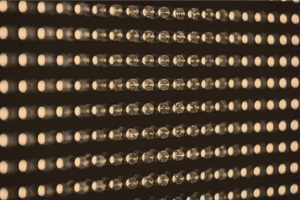You have no items in your shopping basket.
The History of the LED Light

LEDs have become more readily available and affordable in the last few years. They have a huge range of applications in different industries, from farming to streelighting. Many people enjoy the cost saving features of LED lights but don’t know about the history behind the LED.
What is an LED light?
LED stands for light-emitting diode and lights up when it is connected directly to a current. They emit light not only an spectrum that is visible to humans, but also infrared and ultraviolet. LED lights are typically small and have a lower energy consumption and produce less heat than traditional light sources.
The early years of the LED light
The LED light surprisingly isn’t a modern invention. The principles of the LED light were first noticed and documented in the early 20th century. A paper was published in 1927 by Oleg Vladimirovich Losev noting that when 10 volts of electricity is passed through a silicon carbide crystal, a yellow light is emitted.
It wasn’t until the early 1960’s that the potential of the LED light was explored by Gary Pitman and Bob Baird who later patented for infrared LED. The further development of the LED moved from strength to strength and started to become brighter and available in more colours.
LEDs sadly remained too expensive for commercial and domestic use until the mid 1990’s. Improvements in technology and production methods quickly ensured that businesses could start to benefit from using LEDS for a range of uses.
The future of the LED light
The future of LED lights is already here. LED lights can be programmed and even controlled through mobile apps and wifi. Motion sensors and dimming options that were once futuristic are basic features of LED lights in carparks, warehouses and street lighting.
Scientists are exploring the applications of LED lights for growing vegetables in space. Whilst humans living and thriving on Mars is a long way off, it vital to make the most of limited resources such as air and natural light.
Applications for LED lights in different industries
LED lights are the next step for businesses to take in lighting. As covered earlier they require less energy to produce the same amount of light as halogen bulbs. Their impact on the environment is therefore better. LED lights are also hardy and so can stand up to the rigours of everyday use in an industrial environment.
Many councils across the UK have installed LED lights to save on rising electricity bills. This has allowed precious funding to be moved to areas that need it most. LED lights for street lighting also mean a better sense of safety for residents. This is down to the directional nature of LED lights, meaning light is focused in a specific direction and isn’t wasted like halogen lights.
Embracing LED technology is a move towards a more sustainable future for any industry.
